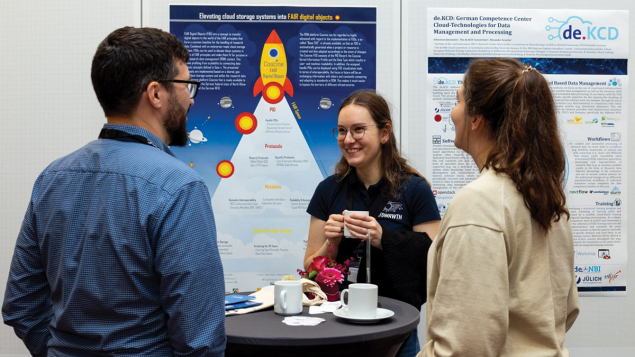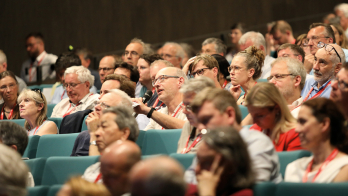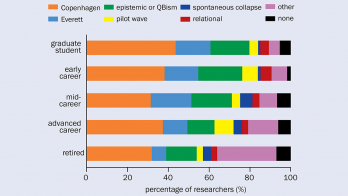
Findable. Accessible. Interoperable. Reusable. That’s the dream scenario for scientific data and tools. The European Open Science Cloud (EOSC) is a pan-European initiative to develop a web of “FAIR” data services across all scientific fields. EOSC’s vision is to put in place a system for researchers in Europe to store, share, process, analyse and reuse research outputs such as data, publications and software across disciplines and borders.
EOSC’s sixth symposium attracted 450 delegates to Berlin from 21 to 23 October 2024, with a further 900 participating online. Since its launch in 2017, EOSC activities have focused on conceptualisation, prototyping and planning. In order to develop a trusted federation of research data and services for research and innovation, EOSC is being deployed as a network of nodes. With the launch during the symposium of the EOSC EU node, this year marked a transition from design to deployment.
While EOSC is a flagship science initiative of the European Commission, FAIR concerns researchers and stakeholders globally. Via the multiple projects under the wings of EOSC that collaborate with software and data institutes around the world, a pan-European effort can be made to ensure a research landscape that encourages knowledge sharing while recognising work and training the next generation in best practices in research. The EU node – funded by the European Commission, and the first to be implemented – will serve as a reference for roughly 10 additional nodes to be deployed in a first wave, with more to follow. They are accessible using any institutional credentials based on GÉANT’s MyAccess or with an EU login. A first operational implementation of the EOSC Federation is expected by the end of 2025.
A thematic focus of this year’s symposium was the need for clear guidelines on the adaption of FAIR governance for artificial intelligence (AI), which relies on the accessibility of large and high-quality datasets. It is often the case that AI models are trained with synthetic data, large-scale simulations and first-principles mathematical models, although these may only provide an incomplete description of complex and highly nonlinear real-world phenomena. Once AI models are calibrated against experimental data, their predictions become increasingly accurate. Adopting FAIR principles for the production, collection and curation of scientific datasets will streamline the design, training, validation and testing of AI models (see, for example, Y Chen et al. 2021 arXiv:2108.02214).
EOSC includes five science clusters, from natural sciences to social sciences, with a dedicated cluster for particle physics and astronomy called ESCAPE: the European Science Cluster of Astronomy and Particle Physics. The future deployment of the ESCAPE Virtual Research Environment across multiple nodes will provide users with tools to bring together diverse experimental results, for example, in the search for evidence of dark matter, and to perform new analyses incorporating data from complementary searches.








